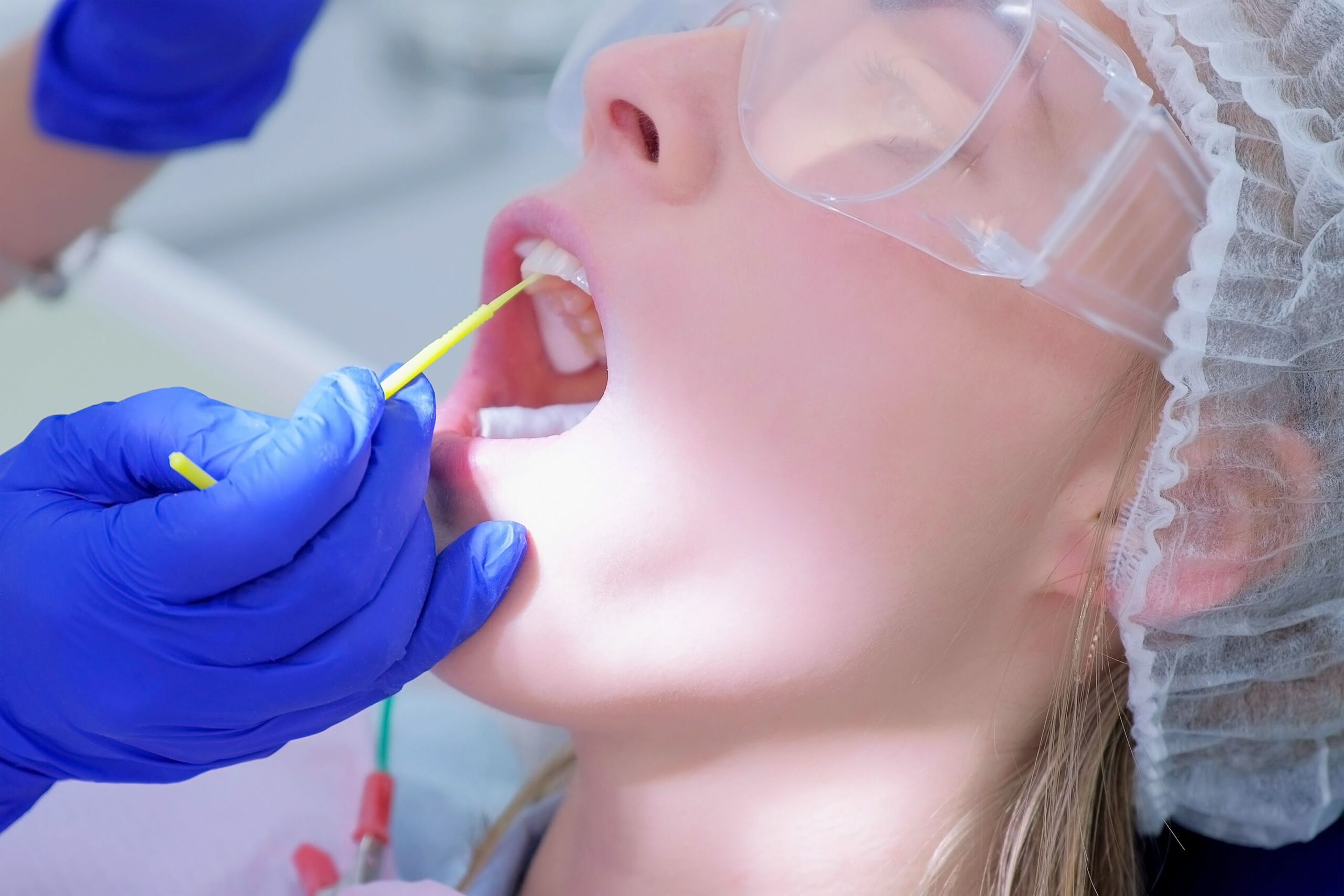Fluoride Treatment: What You Should Know
Fluoride is a mineral that helps prevent tooth decay (dental caries) by fighting acid-producing bacteria that turn into plaque. Found in many foods and water, fluoride also strengthens and protects tooth enamel to keep teeth strong and healthy.
Several studies have shown community water fluoridation (adjusting the amount of fluoride in drinking water) helps prevent tooth decay by about 25% in children and adults.
This article discusses fluoride treatments, their benefits, and their possible side effects.
family lifestyle
Dental Health With Fluoride
To keep your teeth healthy, it’s important to include fluoride in your daily oral hygiene routine. For many people, fluoride is added to their drinking water by their communities. In addition, people also use toothpaste that contains fluoride.
Both of these methods are effective ways to apply fluoride to your teeth. However, your dentist may suggest a dental fluoride treatment option if you need additional fluoride.
procedure
While there are over-the-counter (OTC) fluoride treatments for adults and children, your dentist may suggest an in-office fluoride treatment. These include:
- Fluoride mouth rinses are a concentrated solution that you swish in your mouth and around your teeth as directed, typically once a day or weekly.
- Fluoride supplements are available as a tablet or lozenge and are consumed by chewing or sucking on the supplement before swallowing. Fluoride supplements may also be administered as a liquid, which you swish in your mouth before swallowing.
- Fluoride gel and/or foam are applied by your dentist and left on your teeth for several minutes before you can rinse.
- Fluoride varnish is an in-office treatment that is applied by brushing the fluoride on your teeth, where it will remain until it is absorbed by the teeth or brushed off after several hours.
Don’t Use Too Much Fluoride
Prescription or in-office dental fluoride treatments contain a higher concentration of fluoride than OTC treatments and toothpaste. They should never be used without supervision by your dentist.
cost
The cost for a dental fluoride treatment varies based on the type, but they typically start at around $25. If you have dental insurance, your policy may cover certain dental fluoride treatments. It’s important to discuss these treatments with your insurance provider before you get one at the dentist’s office.
How Much Fluoride Is Needed?
For healthy teeth, brush twice a day with fluoride toothpaste. Most toothpaste has a range of 1,000-1,500 parts per million (ppm) of fluoride.
Parents with children younger than 2 should consult with their healthcare provider, pediatrician, or dentist before starting a fluoride toothpaste. However, when your child cuts their first tooth, the American Academy of Pediatrics suggests using a “smear” of fluoride toothpaste twice a day.
Children ages 3–6 years should use a pea-sized amount of fluoride toothpaste. There are also lower concentrations of fluoride available for children younger than 2 (for example, 500 ppm).
Talk to your dentist regarding specific fluoride amounts if you need additional fluoride.
Don’t Skip Regular Dental Visits
Visit a board-certified dentist at least once a year for a regular dental hygiene checkup. Your dentist will examine your teeth and gums to monitor any changes that could lead to tooth decay or gum disease, which will require treatment.
benefits
Fluoride is essential for a healthy mouth and teeth. The benefits of fluoride include building strong teeth, protecting tooth enamel, and fighting tooth decay. Fluoride also reduces the amount of acid on your teeth caused by bacteria.
side effects
Like many other minerals, fluoride can be toxic if you consume it in high doses. However, if you brush your teeth twice a day with fluoride toothpaste, the amount of it is too small to present a risk. If your dentist prescribes additional fluoride treatments, it’s important to use them as directed.
Children ages 8 and younger are at risk for developing dental fluorosis, or discoloration on their teeth, if they use too much fluoride over a long period of time. This is because their permanent teeth are below the gumline and still developing.
Summary
Good dental hygiene includes fluoride in your toothpaste and/or drinking water to help prevent tooth decay. If necessary, your dentist may recommend additional dental fluoride treatments. These treatments are a quick and easy way to help ward off tooth decay and gum disease. To keep your teeth healthy, it’s important to brush your teeth twice a day with a fluoride toothpaste.
A Word From Verywell
Brushing your teeth with fluoride toothpaste twice a day goes a long way in keeping your teeth healthy and strong. Be sure to get a dental cleaning and checkup at least once a year, and speak with the dentist about fluoride treatments.
Frequently Asked Questions
-
How long does fluoride treatment last?
How long a fluoride treatment lasts depends on the fluoride treatment. For instance, with a fluoride rinse, you may need to use the rinse daily or weekly. However, with a fluoride varnish, you may just need two applications per year.
-
When can I brush my teeth after fluoride treatment?
It depends on the fluoride treatment you use. For example, if you use a fluoride rinse, you can brush your teeth at your next regularly scheduled time to brush. So if you rinse in the morning, you can brush again that evening. If you have a fluoride varnish, your dentist may instruct you not to brush again for several hours.



Comments are closed.